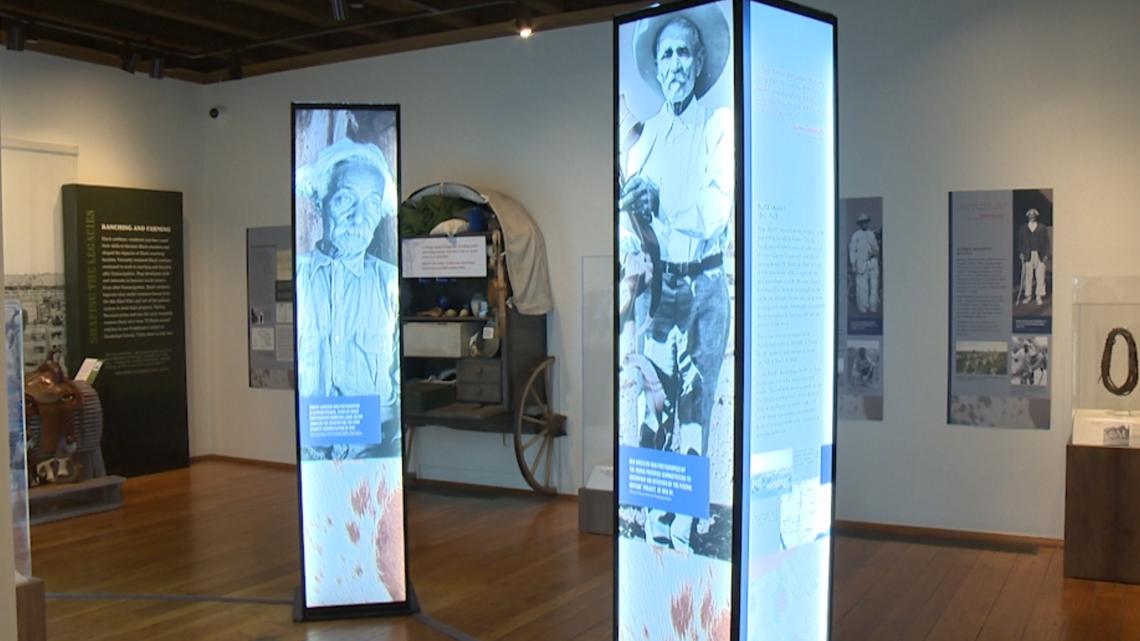
The exhibit has traveled across the country and is back in San Antonio with new research.
SAN ANTONIO — In light of Rodeo Season and Black History Month, you can get your fix for both in the Black Cowboy Exhibit at the Witte Museum.
The history behind the name Cowboy started with the Vaqueros which included Spanish, Native Americans, and Africans.
Over time, the word Cowboy was used to addressed Black Cattle Ranchers. Cowhand was used for white men.
In the Black Cowboy Exhibit, you’ll learn about Black Trailblazers who helped make a difference in Western Culture.
“Stereotypically, you look at a Black person you don’t think Cowboy unless you’re in that life, and like I said, first cowboys are Black,” said Karnes City trail rider Jarred Pollard.
Historically, 1 out of 4 cowboys on the Chisolm Trail were Black taking cattle from Mexico up to places like Chicago since 1867.
In the Black Cowboy Exhibit you can read about their lives and impact on western culture.
The exhibit has traveled across the country and is back in San Antonio with new research.
“We knew that we had to do an exhibit that did justice to those individuals who were erased from American history,” said Witte Museum curator Ronald Davis II
The exhibit starts centuries back with the history of Black cattle ranching in Africa moving across the Atlantic.
It goes through the struggles they faced like the story of Hector Bazy a Black Cowboy born into slavery in 1850.
“When he’s trying to, take horses in Dallas, for example, the discrimination he experienced because he had these well trained horses, he needed a white man to vouch for him that they were his horses,” said Davis.
The exhibit includes living legends like eight-time rodeo champion Fred Whitfield.
Some legends are generational like the Wilcox family having roots in Seguin.
“After emancipation, Henry Wilcox started the Wilcox Ranch outside of Seguin a few miles, and they were actually important in founding Jiggs colony, which is a freedman’s colony,” said Davis.
Seeing all of the names and faces of Black pioneers on the frontier, Pollard is carrying on the tradition.
“I would love to be one of the predominant black cattle ranchers in Texas and slowly but surely, I’m working on it,” said Pollard.
Riding horseback and wrangling bulls, the story will never end.
“African-American history is just another lens to which we understand American history. You can’t really understand American history unless you are able to look at the past through the perspectives of different people,” said Davis.
The Black Cowboy Exhibit will be open until April 6.
If you want to learn more about this subject, there is a Black Cowboy Museum in Rosenberg, just outside of Houston.
